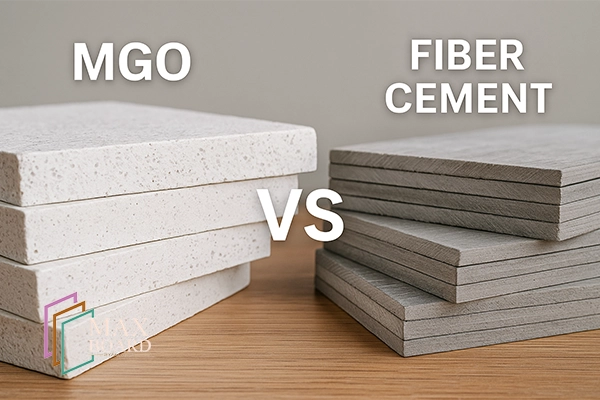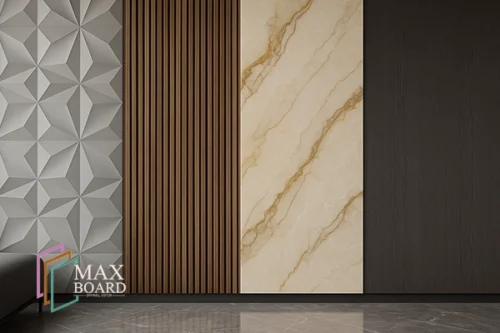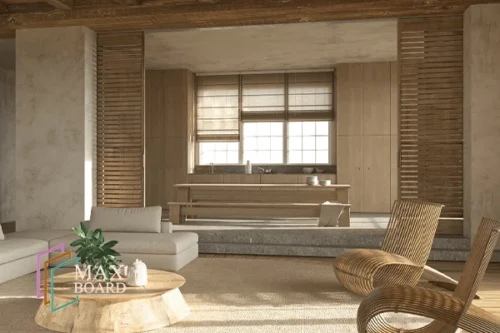When comparing MGO vs fiber cement boards, architects and builders often ask which material offers better durability, moisture resistance, and long-term value. Both are popular choices for modern construction, but MGO boards generally provide superior fire resistance, eco-friendliness, and stability in humid conditions, while fiber cement boards remain a trusted option for exterior cladding. Understanding the benefits of MGO boards and the challenges of fiber cement board installation helps construction professionals make the right material choice.
Introduction
The debate around MGO vs fiber cement boards has gained significant attention in the construction industry. With both materials used extensively in residential, commercial, and industrial projects, the choice between them can directly affect building performance, compliance, and long-term costs.
MGO (Magnesium Oxide) boards are engineered wall panels known for their non-combustible core, exceptional moisture resistance, and eco-friendly composition. On the other hand, fiber cement boards have a long track record as exterior cladding materials, offering good strength and weather resistance. However, their performance can vary depending on climate conditions, especially when exposed to moisture or requiring specialized installation techniques.
In this article, we provide a comprehensive comparison of MGO vs fiber cement boards, exploring their durability, fire performance, environmental impact, ease of installation, and overall cost efficiency. By breaking down the benefits of MGO boards alongside the practical realities of fiber cement board installation, we aim to equip architects, contractors, and developers with clear insights for smarter decision-making.
Material Composition & Manufacturing Process
When comparing MGO vs fiber cement boards, one of the most important distinctions lies in how these materials are made and what they are composed of. Their chemical and structural makeup directly influences performance, sustainability, and long-term durability.
1. MGO Boards (Magnesium Oxide Panels)
- Composition: Made primarily from magnesium oxide (MgO), magnesium chloride, and lightweight fillers such as perlite or wood fibers.
- Manufacturing Process: A cold-press process binds the components together, creating a dense, stable, and non-combustible panel. No high-energy kilns are required, which makes production more eco-friendly.
- Properties: Because the board is non-organic and free of cellulose, it resists mold, mildew, and pests. It is also dimensionally stable under high humidity conditions, making it an ideal choice for coastal or tropical regions.
- Benefits of MGO Boards: Lightweight yet strong, environmentally sustainable, VOC-free, and suitable for both interior and exterior applications.
- Composition: A mix of Portland cement, silica, sand, cellulose fibers, and water.
- Manufacturing Process: Boards are cured using high-pressure steam (autoclaving), which strengthens the cement and fiber matrix. This process, however, consumes more energy compared to MGO production.
- Properties: Provides good strength and weather resistance, particularly when used as exterior cladding. However, because it contains cellulose fibers, it is more vulnerable to moisture absorption and may require protective coatings.
- Fiber Cement Board Installation Considerations: Panels are heavier than MGO boards, often requiring specialized cutting tools (diamond-tipped blades) and safety precautions to reduce silica dust exposure.
Key Comparison Insight:
While both materials offer durability, MGO boards stand out for their sustainability, lightweight handling, and resistance to mold. In contrast, fiber cement boards are more traditional but come with installation challenges and potential moisture-related issues.
Durability & Structural Performance
When evaluating MGO vs fiber cement boards, durability is one of the most critical aspects to consider. Both materials are engineered for long-term performance, but their resistance to external forces and environmental stressors varies significantly.
1. MGO Boards (Magnesium Oxide Panels)
- Moisture Resistance: MGO boards have a non-organic core that does not absorb water. This prevents swelling, warping, or softening—even in high-humidity coastal zones.
- Mold & Mildew Protection: Since they contain no cellulose, MGO panels do not support mold or fungal growth, making them a healthier option for interiors.
- Fire Resistance: MGO is naturally non-combustible and meets international standards such as ASTM E136 and EN 13501-1, providing strong passive fire protection.
- Structural Strength: These boards are impact-resistant and dimensionally stable under stress from wind loads, fasteners, or building movement.
2. Fiber Cement Boards
- Moisture Resistance: Fiber cement panels are more susceptible to moisture absorption due to their cellulose fiber content. Without proper sealing, they may experience cracking or spalling over time.
- Mold Growth: While resistant to most biological damage, prolonged exposure to water can still allow mildew or surface staining.
- Fire Resistance: Fiber cement boards are also non-combustible and widely accepted in fire-rated assemblies, but their performance often relies on added coatings or finishes.
- Structural Strength: Heavier than MGO boards, they provide strong resistance against impact but may require additional support structures during installation.
Key Comparison Insight:
For long-term durability, MGO boards outperform fiber cement in humid or coastal environments, thanks to their superior moisture resistance and mold-proof composition. However, fiber cement boards remain a reliable choice for exterior cladding in less humid regions where their heavy-duty strength is an advantage.
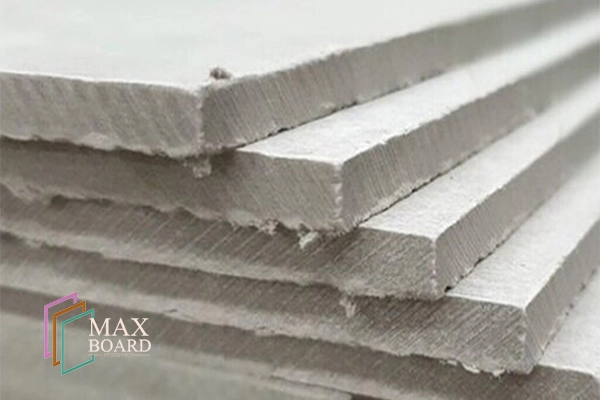
Moisture, Mold & Fire Resistance
Environmental resistance is where the MGO vs fiber cement boards debate becomes most relevant—especially in regions exposed to high humidity, frequent rainfall, or fire risk. Both materials are designed to withstand harsh conditions, but their performance varies in key areas.
1. Moisture Resistance
- MGO Boards: Naturally hydrophobic, MGO panels resist water penetration and maintain dimensional stability. Even in prolonged damp conditions, they do not swell, crack, or soften.
- Fiber Cement Boards: While more resistant than wood, fiber cement contains cellulose fibers, making it vulnerable to moisture absorption. If left unsealed, panels may warp or degrade over time.
2. Mold & Mildew Protection
- MGO Boards: Completely inorganic, they do not provide nutrients for mold or fungi. This makes them an excellent choice for hospitals, schools, and coastal buildings where indoor air quality is critical.
- Fiber Cement Boards: Resistant to most biological threats, but prolonged dampness can still cause surface discoloration or mildew growth if coatings wear off.
3. Fire Resistance
- MGO Boards: Classified as non-combustible under ASTM E136 and EN 13501-1, MGO panels act as a passive fire barrier. They maintain integrity under extreme heat without releasing toxic smoke.
- Fiber Cement Boards: Also non-combustible and widely approved for fire-rated assemblies, but they may require fireproof coatings in certain applications.
Key Comparison Insight:
If moisture and biological resistance are top priorities, MGO boards provide unmatched performance, especially in coastal or tropical zones. However, in fire safety, both MGO vs fiber cement boards perform strongly, meeting international compliance standards.
Fiber Cement Board Installation Considerations
While fiber cement boards are durable and widely used, their installation process requires careful planning and execution. Mistakes during handling or installation can compromise their long-term performance. Here are the most important fiber cement board installation considerations to keep in mind:
1. Cutting & Dust Control
- Fiber cement generates silica dust when cut, which can be hazardous if inhaled.
- Installers should use specialized saw blades with dust-collection systems or opt for score-and-snap techniques.
- Always follow OSHA or equivalent safety guidelines for worker protection.
2. Fastening Systems
- Fiber cement is denser and more brittle compared to gypsum-based panels.
- It requires corrosion-resistant screws or nails, applied with precision to prevent edge cracking.
- Pre-drilling may be necessary in some cases.
3. Joint Treatment & Expansion Gaps
- Panels must be installed with proper spacing to allow for thermal expansion and contraction.
- Sealants and joint compounds should be UV- and moisture-resistant to prevent water ingress.
4. Weight & Handling
- Fiber cement boards are heavier than MGO boards.
- This increases labor requirements and may affect installation speed.
- Panels must be carried vertically to prevent breakage.
5. Finishing & Coating
- To maximize resistance against moisture and UV exposure, most fiber cement products require priming and painting.
- Manufacturers recommend repainting every 5–10 years depending on the climate.
Key Comparison Insight:
When evaluating MGO vs fiber cement boards, installation complexity is a clear differentiator. Fiber cement boards require more specialized tools, dust-control measures, and ongoing surface treatments, which can increase project costs and timelines.
Environmental Impact & Sustainability
Sustainability has become a critical factor in modern construction projects. When comparing MGO vs fiber cement boards, their environmental footprint and contribution to green building standards play a decisive role.
1. Raw Materials & Production Process
- MGO Boards: Manufactured using magnesium oxide, a mineral that requires relatively low kiln temperatures compared to Portland cement. This results in reduced CO₂ emissions during production.
- Fiber Cement Boards: Produced using a mixture of cement, sand, and cellulose fibers. The cement production process is energy-intensive and contributes significantly to global carbon emissions.
2. VOC-Free & Healthy Indoor Air
- MGO boards are non-toxic, free from asbestos, formaldehyde, and VOCs. This makes them a healthier choice for indoor environments such as schools, hospitals, and residential projects.
- Fiber cement may contain trace chemicals from additives and often requires paints or coatings that emit VOCs unless eco-friendly finishes are used.
3. Recyclability & End-of-Life Impact
- MGO boards can often be recycled or reused, depending on local waste regulations. Their inert composition minimizes landfill impact.
- Fiber cement boards, due to cement and fiber composition, are less recyclable and often end up in landfills.
4. LEED & Green Building Credits
- Both materials can contribute to LEED or BREEAM certification, but MGO has an advantage thanks to its low embodied energy, VOC-free nature, and recyclability.
- Using MGO in projects can earn additional points under categories like indoor air quality and materials with lower carbon footprints.
5. Longevity as a Sustainability Factor
- Longer lifespan means fewer replacements and reduced environmental impact. MGO boards often outperform fiber cement in high-humidity coastal zones, minimizing waste over time.
Key Takeaway:
When assessing MGO vs fiber cement boards, MGO consistently demonstrates stronger environmental benefits. Its low-carbon production, VOC-free profile, and contribution to sustainable construction make it the preferred choice for green-certified projects.
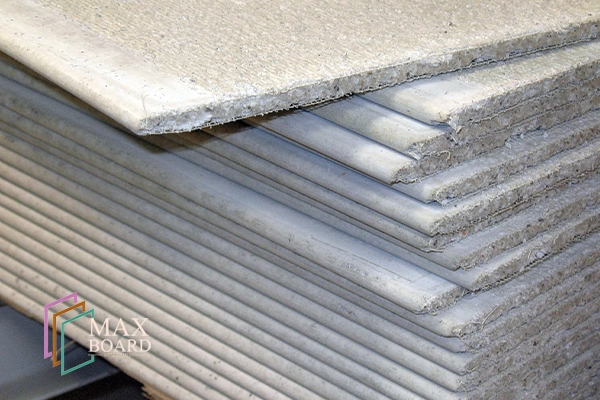
Cost Analysis & ROI (MGO vs Fiber Cement)
When choosing between MGO vs fiber cement boards, cost often becomes a deciding factor. However, it’s important to look beyond the initial purchase price and evaluate the full lifecycle costs, including installation, maintenance, and long-term performance.
1. Initial Material Costs
- MGO Boards: Typically priced in the mid-range ($10–$14 per m²), offering premium durability at a reasonable cost.
- Fiber Cement Boards: Slightly cheaper on average ($9–$12 per m²), but the difference is marginal when long-term value is considered.
2. Installation Expenses
- Both materials require professional installation, but fiber cement is heavier, which can increase labor costs and extend project timelines.
- MGO boards are lighter and easier to cut, reducing handling time and overall labor expenses.
3. Maintenance Costs
- MGO Boards: Highly resistant to moisture, mold, and fire, requiring minimal upkeep and fewer replacements.
- Fiber Cement Boards: More susceptible to cracking, efflorescence, and paint degradation, leading to higher maintenance and repainting costs over 15–20 years.
4. Longevity & Replacement Frequency
- MGO boards can last 30+ years with proper care, maintaining structural and aesthetic integrity.
- Fiber cement may need partial replacement or frequent recoating in humid or coastal environments, adding to long-term costs.
5. Return on Investment (ROI)
- Over a 20-year lifecycle, MGO boards can save 25–40% in total costs compared to fiber cement due to lower maintenance and replacement needs.
- Projects that use MGO often benefit from quicker regulatory approvals (thanks to better fire/moisture certifications) and improved property valuation.
Key Takeaway:
While fiber cement may seem slightly cheaper at first glance, MGO boards deliver superior ROI through lower installation costs, minimal maintenance, and longer lifespan—making them the smarter financial investment for sustainable and resilient construction.
Aesthetic Flexibility & Design Options (MGO vs Fiber Cement)
When comparing MGO vs fiber cement boards, performance is only half of the story. Architects and designers also demand materials that offer flexibility in finishes, textures, and overall visual appeal. Both materials bring value, but MGO offers some distinct advantages in versatility.
1. Surface Finishes
- MGO Boards: Can be finished with paint, laminates, veneers, tiles, or textured coatings. Their smooth, stable surface makes them ideal for both modern and traditional designs.
- Fiber Cement Boards: Typically come pre-textured (wood grain, stucco-like). While they can be painted, finish options are less adaptable compared to MGO.
2. Color Retention & Coating Compatibility
- MGO: Accepts a wide variety of coatings, including breathable and UV-resistant paints. This flexibility ensures longer-lasting color vibrancy without frequent repainting.
- Fiber Cement: Prone to fading or chalking over time, especially in high-UV regions. Repainting may be required every 8–12 years.
3. Design Versatility
- MGO Boards: Lightweight yet strong, allowing easy cutting and shaping for custom architectural details, partitions, and curved applications.
- Fiber Cement Boards: More rigid and heavier, limiting creative flexibility in design. Custom shapes often require expensive tooling.
4. Indoor vs Outdoor Applications
- MGO: Works seamlessly for both interior (ceilings, partitions, wall linings) and exterior cladding.
- Fiber Cement: Primarily optimized for exterior facades and siding, with limited use indoors due to weight and rigidity.
5. Sustainability in Design
- Both MGO and fiber cement can be used in LEED-certified projects, but MGO’s VOC-free, non-toxic composition makes it especially suitable for interior spaces where air quality and sustainability are design priorities.
Key Takeaway:
When it comes to aesthetic flexibility, MGO boards clearly outperform fiber cement by offering broader finish options, easier customization, and longer-lasting visual appeal—making them the preferred choice for architects and designers seeking both performance and beauty.
Sustainability & Environmental Impact (MGO vs Fiber Cement)
As green construction becomes a global priority, sustainability is no longer a “bonus”—it’s a requirement. Comparing MGO vs fiber cement boards, both materials can support eco-friendly building practices, but MGO often provides a stronger environmental profile.
1. Raw Material Sourcing
- MGO Boards: Made primarily from magnesium oxide, a naturally abundant mineral. Many manufacturers also use industrial by-products and low-energy curing processes.
- Fiber Cement Boards: Contain cement, sand, and cellulose fibers. Cement production is highly energy-intensive and one of the largest sources of CO₂ emissions globally.
2. Energy Consumption & Carbon Footprint
- MGO: Requires lower kiln temperatures in manufacturing compared to Portland cement, leading to reduced greenhouse gas emissions.
- Fiber Cement: High cement content makes its carbon footprint significantly larger.
3. Indoor Air Quality
- MGO Boards: Free from formaldehyde, VOCs, and asbestos. They do not off-gas harmful chemicals, making them healthier for occupants.
- Fiber Cement: Generally safe, but cutting fiber cement produces silica dust, which requires strict onsite handling to protect worker health.
4. End-of-Life & Recycling
- MGO Boards: Can often be reused, ground down, and recycled into new building materials.
- Fiber Cement Boards: More difficult to recycle due to cement composition. Often end up as construction waste in landfills.
5. LEED & Green Certifications
- MGO: Contributes more points toward LEED, BREEAM, and Estidama certifications, particularly for indoor air quality, low emissions, and sustainable sourcing.
- Fiber Cement: Can still contribute to green credits but typically scores lower than MGO in lifecycle sustainability metrics.
Key Takeaway:
When comparing MGO vs fiber cement boards in terms of sustainability, MGO has a clear advantage thanks to lower carbon emissions, healthier indoor air performance, and better recyclability—making it the preferred option for eco-conscious builders and green-certified projects.
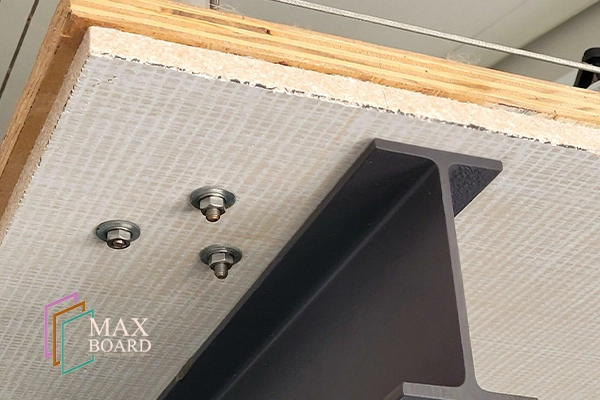
Cost Comparison & ROI (MGO vs Fiber Cement)
When comparing MGO vs fiber cement boards, price is often a decisive factor. While both materials offer strong performance in demanding environments, their long-term financial implications can differ significantly.
1. Initial Material Costs
- MGO Boards: Generally priced in the mid-to-premium range ($10–$14 per m²), offering strong durability with a balanced cost.
- Fiber Cement Boards: Slightly lower to mid-range ($9–$12 per m²), making them attractive for budget-sensitive projects.
2. Installation Costs
- MGO Boards: Lightweight and easier to cut/shape with standard tools, reducing installation time and labor expenses.
- Fiber Cement Boards: Heavier and denser, requiring specialized cutting tools, dust control systems, and more manpower, which can increase installation costs.
3. Maintenance & Lifecycle Costs
- MGO: Naturally resistant to mold, moisture, and fire. Requires minimal repainting or resealing, leading to reduced maintenance expenses.
- Fiber Cement: More prone to surface wear, paint fading, and occasional resealing. Over a 20–30 year cycle, upkeep costs can accumulate significantly.
4. Risk Reduction & Compliance
- MGO Boards: Their compliance with multiple fire, mold, and sustainability standards reduces risk of fines, insurance issues, or replacement costs.
- Fiber Cement: Durable but not as inherently resistant to all environmental stressors, which may lead to higher risk management costs in coastal or humid regions.
5. Return on Investment (ROI)
Over a 25-year building lifecycle:
- MGO Boards can deliver 25–40% savings in total lifecycle costs thanks to reduced maintenance and replacement needs.
- Fiber Cement Boards may appear cheaper upfront but can result in higher long-term operational costs.
Key Takeaway:
While fiber cement may save money in the short term, MGO vs fiber cement boards analysis shows that MGO offers superior ROI, making it the smarter choice for developers, contractors, and building owners aiming for long-term durability, compliance, and cost efficiency.
Common Mistakes to Avoid When Comparing MGO vs Fiber Cement
When evaluating MGO vs fiber cement boards, many contractors and project managers fall into common pitfalls that can compromise both performance and cost-efficiency. Being aware of these mistakes helps ensure better decision-making for any construction project.
1. Focusing Only on Upfront Costs
- Mistake: Choosing fiber cement simply because it appears slightly cheaper per m².
- Fix: Always calculate the total cost of ownership (TCO), factoring in installation, maintenance, and replacement expenses.
2. Ignoring Environmental Suitability
- Mistake: Assuming both materials perform equally well in humid or coastal conditions.
- Fix: Recognize that MGO boards are inherently better at resisting moisture, salt air, and mold growth than fiber cement.
3. Overlooking Installation Requirements
- Mistake: Not accounting for the heavier weight and specialized tools needed for fiber cement installation.
- Fix: Consider labor, time, and equipment when budgeting, as MGO typically installs faster and easier.
4. Neglecting Long-Term Maintenance
- Mistake: Believing fiber cement panels won’t need repainting or resealing for decades.
- Fix: Factor in regular coating maintenance, especially in UV- or salt-exposed areas, where MGO requires far less upkeep.
5. Skipping Compliance Checks
- Mistake: Assuming both materials meet fire, mold, and safety standards equally.
- Fix: Verify certifications like ASTM, EN, or NFPA. MGO usually meets stricter international standards without additional treatment.
6. Ignoring Sustainability Goals
- Mistake: Selecting panels without considering their environmental footprint.
- Fix: If aiming for LEED or green building certification, MGO has the advantage with low VOC content and recyclability.
Key Takeaway:
The MGO vs fiber cement comparison shows that misjudging costs, ignoring compliance, or underestimating environmental stressors often leads to mistakes. Careful evaluation ensures the selected material delivers long-term durability, safety, and ROI.
Conclusion: Making the Right Choice between MGO vs Fiber Cement
When comparing MGO vs fiber cement, the decision comes down to balancing performance, cost, and long-term value. While both materials have their place in modern construction, their differences become clear when evaluated under real-world conditions:
- MGO boards excel in moisture-heavy, coastal, or high-humidity environments thanks to their superior resistance to mold, mildew, and salt damage. They are lighter to install, eco-friendly, and require less long-term maintenance.
- Fiber cement boards provide durability and a familiar track record in traditional projects but may require more maintenance, coatings, and structural considerations in challenging climates.
For projects prioritizing resilience, sustainability, and lifecycle savings, MGO boards are the smarter choice. For more conventional builds with controlled environments, fiber cement may still be suitable.
Ultimately, the best results come from matching material performance to the project’s environmental challenges, compliance requirements, and sustainability goals. By carefully weighing these factors, contractors and developers can avoid costly mistakes and build safer, longer-lasting structures.
Build Smarter with MaxBoard MGO Panels
When comparing MGO vs fiber cement, the advantages of MGO panels in durability, moisture resistance, and long-term performance are clear. If you’re planning a coastal, commercial, or residential project, choosing the right wall panel can save you years of costly maintenance.
👉 At MaxBoard, we specialize in high-performance MGO boards tested for the toughest environments.
✅ Explore our product line
✅ Download technical datasheets
✅ Contact our team for project consultation
🔗 Visit MaxBoard-MGO.com and start building with confidence today.
FAQ about MGO vs fiber cement
What is the main difference between MGO vs fiber cement boards?
MGO boards offer superior moisture resistance and mold protection, while fiber cement boards provide strong durability but need more maintenance in humid zones.
Are MGO boards better for coastal buildings than fiber cement?
Yes. MGO boards are highly resistant to salt, humidity, and mold, making them ideal for coastal buildings where fiber cement may deteriorate faster.
Which is more cost-effective over time, MGO or fiber cement?
While initial costs are similar, MGO boards often deliver lower lifecycle costs due to minimal maintenance and longer durability in harsh environments.
Can MGO boards replace fiber cement in all applications?
Not always. While MGO boards excel in coastal and humid areas, fiber cement may still be preferred in certain traditional or aesthetic-focused projects.
Do MGO and fiber cement boards both contribute to LEED certification?
Yes. Both materials can contribute to LEED credits, but MGO boards are often favored due to their eco-friendly, VOC-free composition and low carbon footprint.

